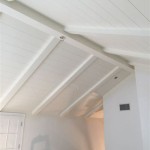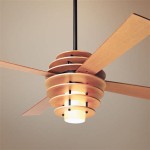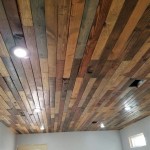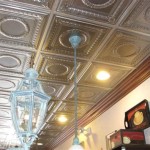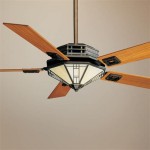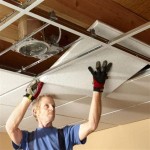Hugger vs. Low Profile Ceiling Fan: Understanding the Differences and Choosing the Right One
Ceiling fans offer a practical and energy-efficient solution for climate control in residential and commercial spaces. Among the various design options available, hugger and low-profile ceiling fans stand out as popular choices, particularly for rooms with lower ceiling heights. While both aim to minimize the distance the fan extends from the ceiling, their construction, design considerations, and suitability for specific room types differ. Understanding these distinctions is crucial when selecting the optimal fan to meet both aesthetic and functional requirements.
This article will delve into the specific attributes of hugger and low-profile ceiling fans, exploring their construction differences, installation considerations, performance characteristics, and common applications. By examining these elements, readers can gain a comprehensive understanding of the advantages and disadvantages of each type, enabling informed decision-making when choosing the right ceiling fan for their space.
Key Point 1: Defining Characteristics and Construction
The primary distinction between hugger and low-profile ceiling fans lies in their design and mounting mechanisms, impacting how close they sit to the ceiling. Hugger fans, also known as flush mount fans, are specifically engineered to mount directly against the ceiling surface. They utilize a specialized mounting bracket that allows the fan motor housing to sit almost flush, minimizing the overall distance from the ceiling to the bottom of the fan blades.
Low-profile ceiling fans, while also designed for lower ceilings, typically incorporate a short downrod. This downrod, though shorter than those found in standard ceiling fans, creates a small gap between the fan motor housing and the ceiling. This slight extension can offer advantages in airflow and aesthetic appeal, but it also means that the fan will extend further down into the room compared to a hugger fan.
The internal construction of both fan types is generally similar, typically incorporating a motor, blade brackets, and a housing. However, the design of the motor housing and the blade pitch might be adjusted to compensate for the proximity to the ceiling. In hugger fans, manufacturers often focus on maximizing airflow efficiency given the limited space between the blades and the ceiling. In low-profile fans, the short downrod can potentially allow for a slightly more aggressive blade pitch, leading to improved air circulation in some cases.
The materials used in construction also play a role in the performance and longevity of both types of fans. Fan blades can be made from various materials, including wood, metal, plastic, or composite materials. The motor housing is generally constructed from metal, often with a decorative finish to complement the room’s aesthetic. The quality of these materials directly influences the fan's durability, noise level, and overall performance. Fan companies will use different materials in both fan styles, depending on the price point and features required.
Key Point 2: Installation Considerations and Space Requirements
Installing either a hugger or low-profile ceiling fan requires careful attention to several factors, particularly room dimensions and existing electrical infrastructure. Both fan types are primarily suited for rooms with low ceilings, typically those less than eight feet in height. Standard ceiling fans with longer downrods can pose safety hazards and visual obstructions in such spaces.
Hugger fans, with their flush-mount design, offer the advantage of maximizing headroom. This makes them ideal for rooms where every inch of vertical space is critical. Installation typically involves attaching the mounting bracket directly to the ceiling joist or a suitable support structure. The fan motor housing is then secured to the bracket, ensuring a stable and secure connection.
Low-profile fans, due to their short downrod, require slightly more vertical clearance than hugger fans. While they still offer a space-saving solution compared to standard downrod fans, it's essential to verify that the fan's overall height does not create any safety concerns or impede movement within the room. The installation process is similar to that of a standard ceiling fan, involving attaching the mounting bracket, connecting the downrod to the motor housing, and then securing the fan to the bracket.
Before installation, it's imperative to ensure that the ceiling joist is capable of supporting the fan's weight, especially with lighting fixtures attached. Reinforcing the joist may be necessary in older homes or if the existing support structure is inadequate. Furthermore, the electrical wiring must be properly grounded and comply with local building codes. If unsure, consulting a qualified electrician is highly recommended. Furthermore, it is important to consider the weight of the fan itself. Some hugger fans are lighter and easier to install for a single person, while a low-profile with a larger motor might require assistance.
The size of the room that the fan will be installed in is equally important. Too small of a fan in a big room will not produce the correct airspeed or air circulation as opposed to a fan that is properly suited for the size of the room. It is wise to measure the square footage of the room where the fan will be installed so that the most optimum fan size can be selected. Failure to select the correct width or diameter of the fan can result in poor overall fan experience.
Key Point 3: Performance and Airflow Efficiency
The primary function of a ceiling fan is to circulate air, providing cooling benefits in summer and assisting in heating distribution during winter. The design of the fan blades, motor power, and overall construction significantly influence its airflow efficiency. While both hugger and low-profile fans are designed for lower ceilings, their performance characteristics can differ.
Hugger fans, with their flush-mount design, often face challenges in maximizing airflow due to the limited space between the blades and the ceiling. This proximity can restrict the fan's ability to effectively draw air from above and circulate it throughout the room. To compensate, manufacturers may utilize specially designed blades with a steeper pitch or employ more powerful motors to generate sufficient airflow. However, these design modifications can sometimes result in increased noise levels.
Low-profile fans, with their short downrod, generally offer slightly improved airflow compared to hugger fans. The small gap between the fan motor housing and the ceiling allows for better air intake and circulation. The blade pitch can often be optimized without compromising headroom, leading to more efficient airflow. This can result in a more comfortable and consistent room temperature.
The motor's efficiency also plays a crucial role in overall performance. DC (Direct Current) motors are often more energy-efficient and quieter than traditional AC (Alternating Current) motors. Choosing a fan with a DC motor can result in reduced energy consumption and a quieter operation, particularly at higher speeds. The number of speeds offered by the fan allows greater control over the airflow and noise level. A fan with multiple speed settings can be adjusted to suit the specific needs of the room and the occupants.
Airflow is commonly measured in cubic feet per minute (CFM). When selecting a ceiling fan, it's important to consider the CFM rating and ensure that it is appropriate for the size of the room. Larger rooms generally require fans with higher CFM ratings to provide adequate air circulation. Additionally, consider the fan's ability to operate in reverse, which can help distribute warm air trapped near the ceiling during winter months, improving heating efficiency.
Key Point 4: Aesthetic Considerations and Design Options
Beyond functionality, the aesthetic appeal of a ceiling fan is an important consideration for many homeowners. Both hugger and low-profile fans are available in a wide range of styles, finishes, and designs to complement various interior decor themes. This allows individuals to choose a fan that not only performs well but also enhances the overall aesthetic of the room where it is installed.
Hugger fans, with their sleek, flush-mount design, often lend themselves well to modern and minimalist interiors. Their low profile makes them less visually obtrusive, allowing other design elements in the room to take center stage. They are particularly well-suited for smaller rooms or spaces where a more discreet aesthetic is desired. Finishes commonly available include brushed nickel, oil-rubbed bronze, and matte black, allowing for coordination with other fixtures and hardware in the room.
Low-profile fans, while still designed for lower ceilings, offer slightly more design flexibility due to the presence of the short downrod. This allows for more intricate motor housing designs and variations in blade styles. They can be found in a wider range of styles, from traditional to contemporary, and often incorporate decorative elements such as integrated lighting fixtures. These light fixtures can come in the form of LED, halogen, or incandescent bulbs. Choosing the correct light bulb color temperature can greatly affect the feel of the entire room.
The choice of blade material and finish also contributes to the overall aesthetic. Wooden blades can add warmth and a natural touch to a room, while metal blades offer a more modern and industrial look. The shape and curvature of the blades can also influence the fan's style, with some featuring sleek, aerodynamic designs and others incorporating more ornate detailing.
Ultimately, the choice between a hugger and low-profile fan depends on individual preferences and the specific design requirements of the room. Consider the existing decor, the desired level of visual prominence, and the functional requirements when making a decision. A well-chosen ceiling fan can not only provide efficient climate control but also serve as a stylish and complementary addition to the room's overall aesthetic.
In summary, the selection between hugger and low-profile ceiling fans hinges on nuanced differences in construction, installation, airflow, and aesthetic considerations. By carefully evaluating these factors, individuals can choose the fan that best meets their specific needs and preferences, ensuring both optimal performance and visual harmony within their living spaces.

Hugger Ceiling Fans Sleek Solutions For Low Spaces Delmarfans Com

Key Considerations When Purchasing A Low Profile Ceiling Fan Dan S City Fans Parts Accessories

Hugger Low Profile Ceilng Fan Vs Regular Ceiling Fans The Amazing Utility Of

Hugger Ceiling Fans Sleek Solutions For Low Spaces Delmarfans Com

52 Casa Vieja Ancestry Broe Hugger Led Ceiling Fan With Remote 59d45 Lamps Plus

Private Brand Unbranded Hugger Ii 52 In Indoor Gun Metal Low Profile Ceiling Fan With 2 Led Bulbs Included Rd4130ah Gm The Home Depot

Close To Ceiling Fans Ideas Advice Lamps Plus

Low Profile Fans Hugger Delmarfans Com

Private Brand Unbranded Hugger Ii 52 In Indoor Matte Black Low Profile Ceiling Fan With 2 Led Bulbs Included Rd4130ah Mbk The Home Depot

Hugger Ceiling Fan Low Profile Classic Flat Brass Maple Flush Mount 79 Cm 31
Related Posts

